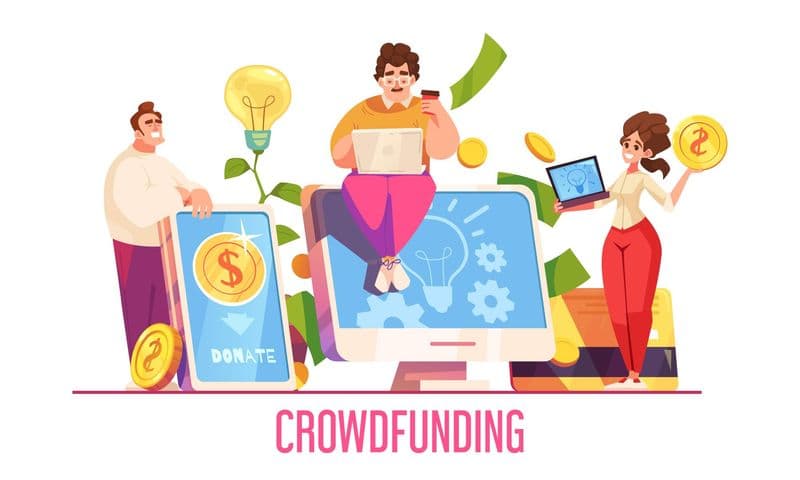
When in the world of sales, being able to differentiate between inbound and outbound prospecting is vital. Let's explore a narrative that lays the groundwork for understanding inbound prospecting's impact in 2024.
Picture a cool morning in Silicon Valley.
I picked up the phone to a call from Jane Smith, the CEO of a tech startup on the rise. She had found our blog, which resonated deeply with her. Impressed, she contacted us to further explore how our services matched her needs.
Here, the beauty of inbound prospecting shone brightly - a lead, Jane, took the initiative, kickstarting a tailored relationship from the get-go.
The realm where cold calling and unsolicited emails reign supreme is now transformed. Today's consumers seek a bespoke, value-centric sales approach. In the inbound prospecting realm, this desire is met, championing personalization and relationship building.
Key Takeaways
- Inbound sales methodology focuses on creating personalized experiences for interested prospects
- This sales strategy emphasizes building relationships with potential clients
- Outbound sales rely on sales representatives initiating conversations through cold calls and emails
- This sales prospecting involves prospects initiating conversations after engaging with the brand
- Inbound sales strategy seeks to connect with prospects through various channels like live chat, email sequences, and social media
In exploring inbound prospecting, you'll come across strategies and tactics poised to transform your sales approach in 2024 and onwards.
Brace yourself to unleash the potential of sales that prioritize personalized, relationship-focused strategies. Expect to win over your customers through deep engagement and conversions.
Understanding Inbound Prospecting
Both types of sales prospecting follow different strategies to find new leads and opportunities. To truly understand inbound prospecting, it's vital to compare these two approaches.
The Difference
Inbound prospecting is when a lead initiates contact, showing interest in your product or service. This method focuses on drawing in already interested subjects and forming strong connections. On the flip side, outbound sales prospecting kicks off with the company making the first move, reaching out to leads who may not have shown interest. The goal of outbound is to stir interest in the company's offerings.
How Inbound Prospecting Works
It is about crafting valuable content and making it easy for your audience to find. It positions your business as a go-to expert and addresses the needs of potential customers. This draws in leads actively looking for what you offer. The key is knowing your customers, using the right search terms, and making sure your content stands out online.
Benefits of Inbound Prospecting
It has clear benefits for companies. It provides a better ROI over time by attracting truly interested parties. This leads to higher quality leads and more conversions.
What's more, it helps your brand become a trusted authority in the market, fostering lasting relationships with customers. A successful inbound strategy needs input from content specialists, SEO pros, social media teams, and analysts, all pulling in the same direction.
Identifying Your Ideal Prospects
Effective inbound prospecting isn't just about leads. It's about finding and connecting with your best customers. This involves understanding both their demographic and psychographic traits. With this knowledge, targeted sales and marketing strategies can be developed. They address and meet your ideal customers' particular needs and challenges.
Demographic and Psychographic Data
Demographic data paints a basic picture of your audience, including things like their age and location. Psychographics, however, dig into their preferences, values, and behaviours. It’s by merging these two types of data that you gain a full view of your customer profile.
Firmographic Data
For B2B ventures, focusing on firmographics is crucial. This covers details like company size, industry, and revenue. With firmographic data, you can pinpoint the organizations that are most likely to need your offering. This lets you direct your efforts towards leads most likely to convert.
Building Buyer Personas
After gathering data, the next step is to build out buyer personas. These representations embody your perfect customers. They guide your teams by outlining customer goals, key challenges, and the decision-making journey. Knowing this, your messaging can be finely tuned for maximum impact.
Taking the time to pinpoint your ideal customers will vastly improve your inbound marketing. It's a method that not only draws in more qualified leads. It also ensures your sales efforts are in tune with what your audience wants and needs.

Inbound Prospecting
In the face of modern buyer habits, selling has pivoted. Salespeople now tailor their approaches to meet consumer expectations, focusing on inbound sales prospecting over cold contacts. It's about putting consumer interests first to achieve sustainable sales success.
Mapping the Buyer's Journey
Buyers today hold the reigns, thanks to the wealth of information available. This means old sales methods are largely ineffective. Understanding your audience's pain points, how they like to communicate, and what influences their decisions is key. It allows them to craft a clear path that pulls them from curiosity to a loyal customer.
Connecting with Prospects
Relationship-building is at the core of this type of prospecting process. Share valuable content, engage on social media, and reach out personally. Make your brand a go-to source and an industry expert through various channels. This approach finds leads and keeps them coming back.
Qualifying Leads
Distinguishing good leads from the rest is vital for success. By knowing who your ideal customers are, you can spot those with the most potential and use your resources wisely. This method, along with a well-integrated marketing strategy, is a recipe for growth in revenue and profits.
Read about the best b2b sales podcasts to know more about the world of prospecting.
Optimizing Your Sales Process
Leads play a key role in sales but may not be enough to reach goals. To improve, combining this strategy with an outbound strategy is key. This takes a comprehensive approach to sales.
Boosting Active Prospecting and Outbound Efforts
While this type of prospecting is important for generating business, it's not the sole method. Engaging in active prospecting and outbound activities remains valuable. Even though outbound techniques face rejection, they serve to reach potential customers not actively looking.
While it's harder to form connections through cold outreach, it can fill the gaps left by this method. This approach demands more initial energy but the rewards can be substantial.
Mining Your CRM for
Turning to your CRM system uncovers insights on your best customers. By examining these, you learn more about the most valuable clients.
This helps in creating an ideal profile for better campaigns and lead qualification. Integrating it into marketing and sales assessments is crucial. It shows the impact of efforts on leads and conversions.
Maximizing Value from Existing Customers
Personalized shopping leads almost half of customers to buy again. Referrals have the top success rate in social media lead generation. Focusing on outstanding customer service and the strength of your relationships boosts growth opportunities significantly.
Aligning marketing and sales efforts drives higher revenue and profits. Furthermore, salespeople who add value during interactions see a 96% spike in success.
Enhancing this strategy means striking a balance with outbound methods. By engaging in proactive outreach, finding your dream customers within the CRM, and keeping your current clients happy, you pave the way for success in sales and marketing.
Conclusion
Today, being successful in sales demands quick thinking and flexibility. Those who swiftly refine their approaches, responding to shifts in how leads come in, will meet their goals both now and in the future.
The game has changed with inbound prospecting putting more power in the buyer's hands. Therefore, smart sales groups need to change how they play.
To ride the wave of changing trends, companies must master this type of prospecting and tailor their strategies wisely. By mining data for deep insights, forging strong customer bonds, and sharing content that adds real value, they pave the way for increased success and revenue.
In the coming days, sales will bridge the gap between the two tactics, focusing on the synergy between marketing on the consumer's needs. This holistic method not only boosts inbound SQLs but also spikes up revenue and profit margins overall. It's about creating a unified journey for the customer.
FAQ
What is the primary difference between inbound and outbound prospecting?
The main difference lies in where a lead comes from. In inbound prospecting, a lead comes from a potential customer. They initiate contact, interested in learning about your offerings. On the other hand, outbound prospecting initiates from the company's side. Here, businesses reach out to prospects who haven't shown interest yet.
How does inbound prospecting work?
This type of prospecting leverages attracting prospects already keen on your business. It does this by creating appealing content and refining your online visibility. This tactic makes it easier for buyers to locate and interact with your brand.
What are the benefits of inbound prospecting?
It focuses on finding prospects inclined towards your offerings. This approach often results in better conversion rates and more solid leads. Besides, it helps in fostering trust and increasing brand recognition among potential clients.
How can I identify my ideal prospects?
Finding your ideal prospects involves collecting varied data to mould detailed buyer personas. These personas shed light on your audience's core interests, buying patterns, and decisions. This deeper understanding allows for the customization of outreach and messaging, making it more impactful.
How do I map the buyer's journey in inbound prospecting?
Mapping the buyer’s journey entails recognizing the phases your prospects move through, like awareness and decision-making. When you customize your content and interactions for each step, you effectively guide them toward becoming customers. This process significantly enhances your conversion potential.
How can I boost my active prospecting and outbound efforts?
While inbound prospecting is essential, pairing it with active and outbound strategies is crucial. You can strengthen your approach by using CRM data to spot promising leads, engaging in targeted social media and email communication, and nurturing existing client relationships. This integrated method maximizes your outreach and sales opportunities.




